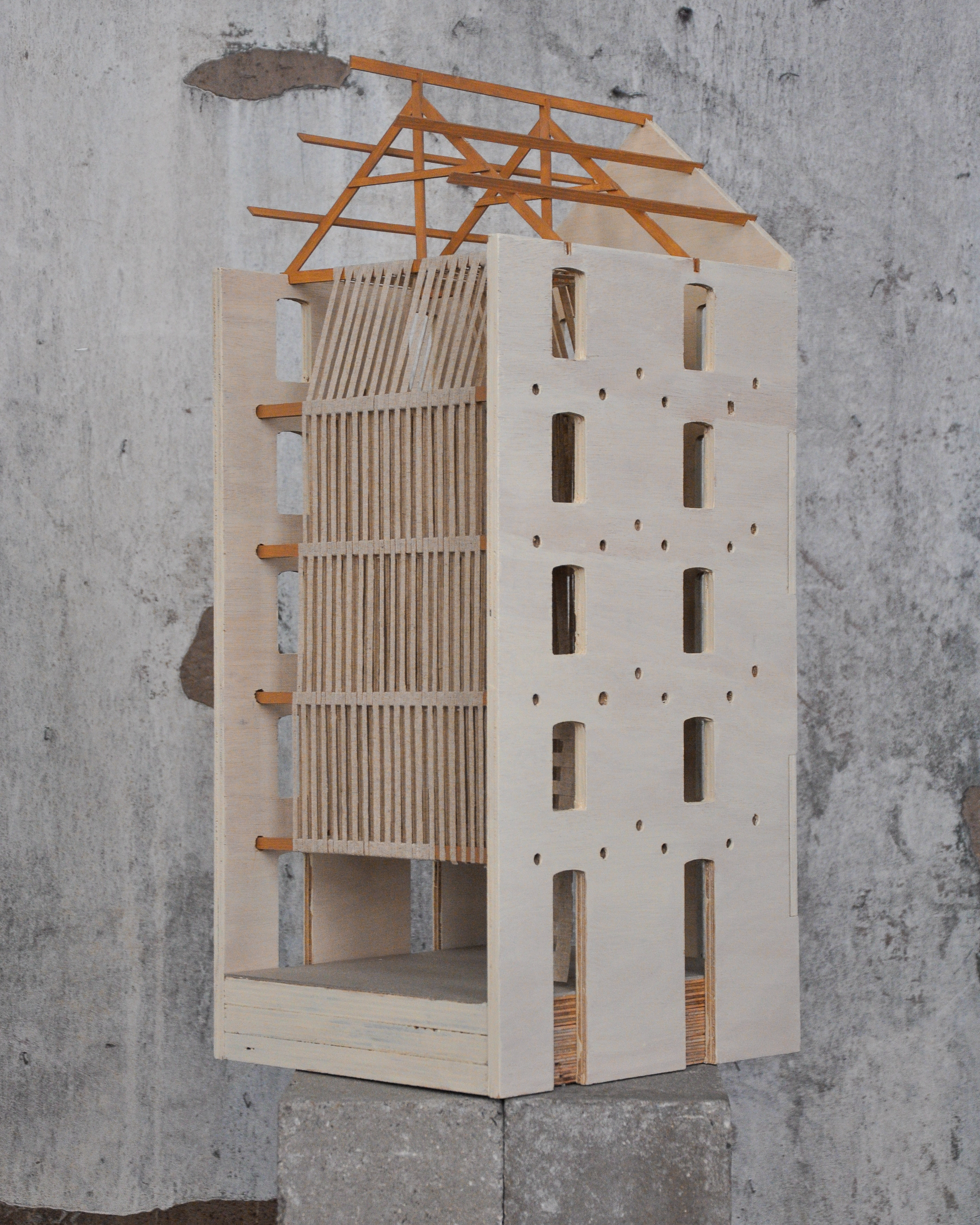Masterstudio: The Architect changemaker Semester 1
Milena Canale




The use of woven fiber thread is both a symbol of the resources scarcity that we’re living in this historical moment and a questioning of concept of firmitas in architecture. Architecture is generally seen as grounded and static, woven fiber thread will set themselves in antithesis to this - revoking the temporary architectures composed of modules that can be disassembled easily. The fibers are delicate light-weight elements, that can seem weak, but the sum of numerous interactions results in a strong overall cohesion. The textile is resilient, because it is flexible and reconfigurable.
If the clothes -the second skin- are adaptive, why not transfer this property to the architecture -the third skin? Why don’t imagine a light, flexible and reconfigurable architecture? And why not use plants fibers? What if the material could be designed to become a structural system itself?
The pavilion created is closed - thanks to the strips - yet open - thanks to the spacing in between strips - space.
It should give the feeling of safe nest and lightness, created by the two floating volumes of flax bands.
The simple orthogonal shape should recall familiar shapes with a different material to what we are used to.
There are two levels of weaving patterns, one of fibers into bands and one of bands around the existing I beams in the building.
The pavilion is composed of a bigger outer volume - which can be lived from outside and inside - and smaller inner volume with platforms - which are accessible through stairs made of the same flax bands.

